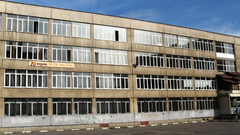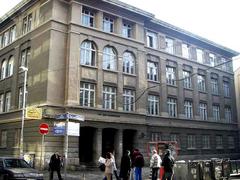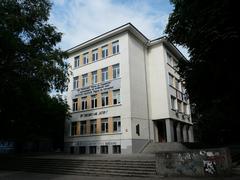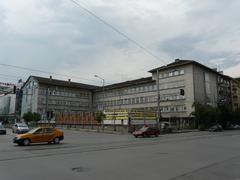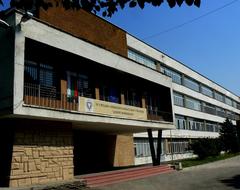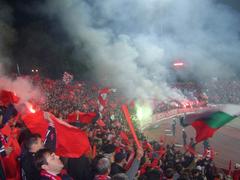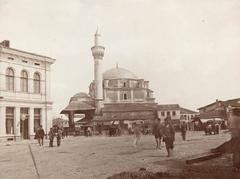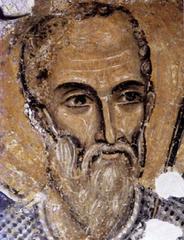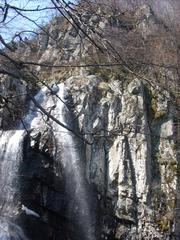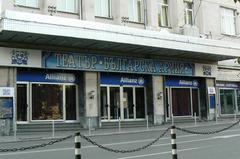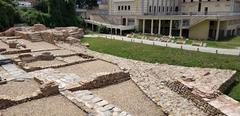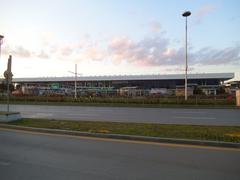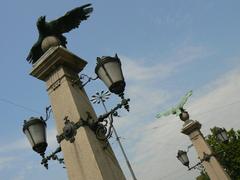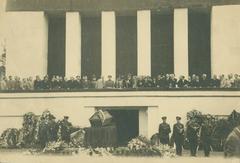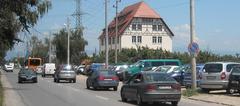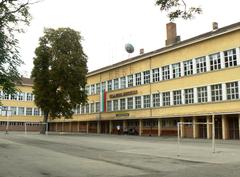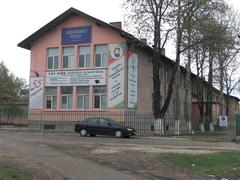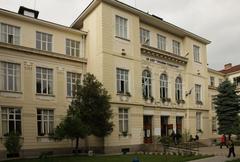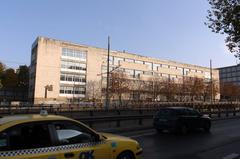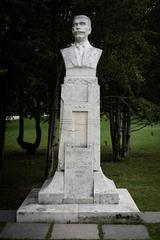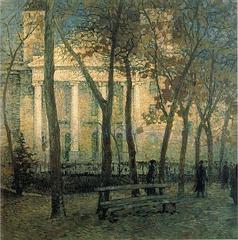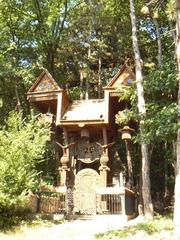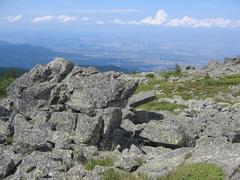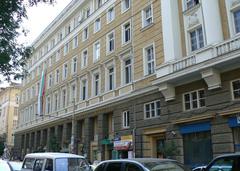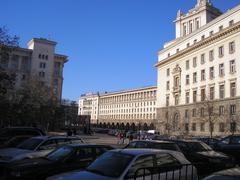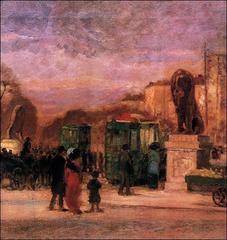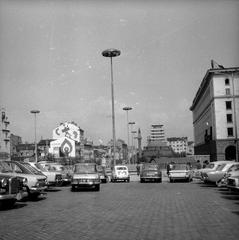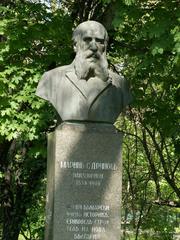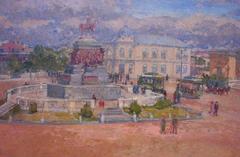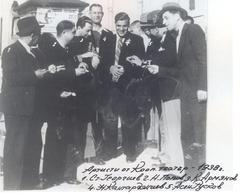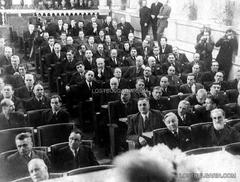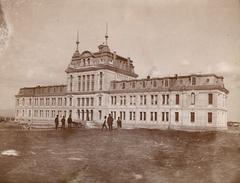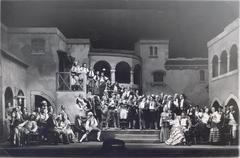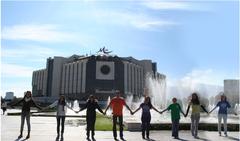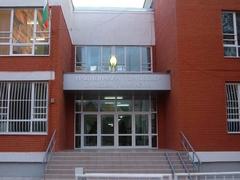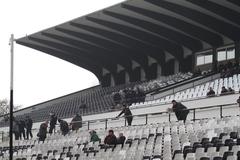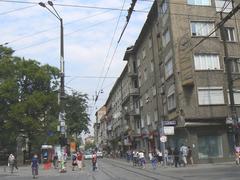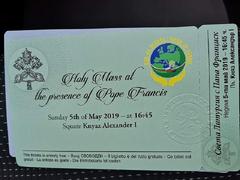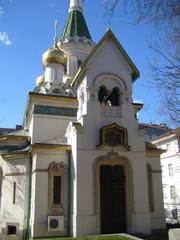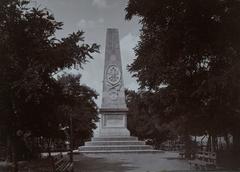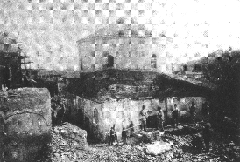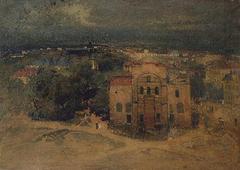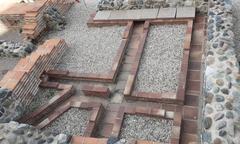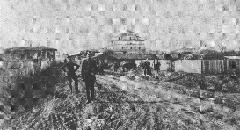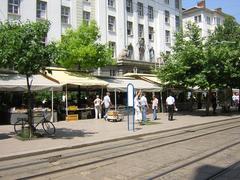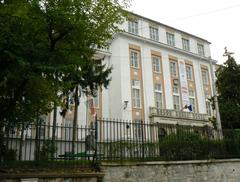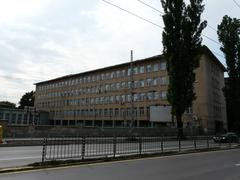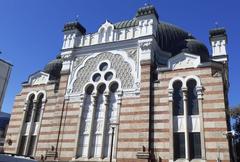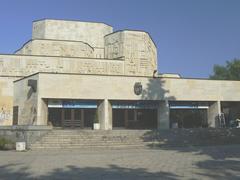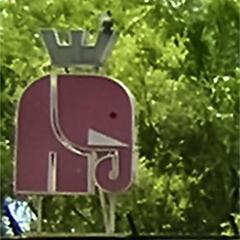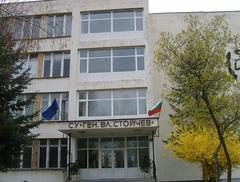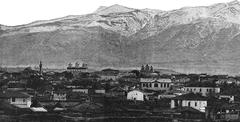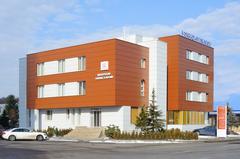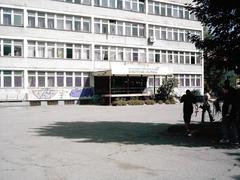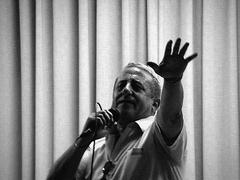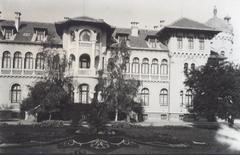Amphitheatre of Serdica: Visiting Hours, Tickets, and Historical Sites in Sofia, Bulgaria
Date: 04/07/2025
Introduction
The Amphitheatre of Serdica, located in the vibrant center of Sofia, Bulgaria, is a remarkable relic of the city’s Roman past. Constructed in the 3rd–4th centuries AD, it stands as a testament to the city’s role as a crossroads of civilizations and a major Roman provincial capital. Today, the amphitheatre is partially preserved beneath the Arena di Serdica Boutique Hotel, offering visitors a unique opportunity to explore Sofia’s ancient heritage within its modern urban landscape. This guide provides detailed information about the amphitheatre’s history, architecture, visiting hours, ticketing, accessibility, and tips for making the most of your visit, while highlighting nearby historical sites that deepen your understanding of Sofia’s rich past (Emerging Europe; Balkazaar; travelshelper.com).
Table of Contents
- Introduction
- Roman Serdica: City of Emperors
- Architecture and Archaeological Features
- Discovery and Preservation
- Visiting Information: Hours, Tickets, and Accessibility
- Nearby Historical Sites
- Visitor Tips
- FAQs
- Conclusion
- References
Roman Serdica: City of Emperors
Serdica, the ancient name for modern Sofia, flourished under Roman rule from the 1st century AD, especially during the reigns of Emperors Diocletian and Constantine the Great. Its strategic location at the crossroads of major trade and military routes contributed to its prosperity and urban development. Constantine the Great famously referred to Serdica as “my Rome,” underscoring its importance in the late Roman Empire (Emerging Europe).
Architecture and Archaeological Features
Monumental Roman Engineering
The Amphitheatre of Serdica was built atop an earlier Roman theatre, a rare example of architectural layering in the Balkans. Its elliptical arena, measuring approximately 60 meters long and 43 meters wide, could accommodate between 20,000 and 25,000 spectators. The structure featured:
- Tiered Seating (Cavea): Organized by social status, with the elite closest to the arena.
- Vomitoria (Entrances/Exits): Efficient passageways for crowd movement.
- Subterranean Chambers (Hypogeum): Used for housing gladiators and animals before spectacles.
- Opus Mixtum Construction: Alternating layers of stone and Roman brick for strength and visual appeal.
Decorative elements, such as marble cladding, statues, and inscriptions, have been partially recovered, hinting at the amphitheatre’s original grandeur (Balkazaar; Evendo).
Discovery and Preservation
Rediscovery in the 21st Century
Although a stone plate depicting gladiatorial combat was found in 1919, the true extent of the amphitheatre was only revealed during construction work for the Arena di Serdica Hotel in 2004. Archaeologists quickly identified the ruins as part of a massive Roman amphitheatre, prompting major preservation efforts. Today, about one-sixth of the original structure is viewable beneath the hotel. The remainder remains buried under the densely built city center, presenting ongoing challenges for archaeological research and conservation (Emerging Europe).
Integration with Modern Sofia
The amphitheatre’s ruins are ingeniously incorporated into the Arena di Serdica Boutique Hotel’s basement and public areas, demonstrating Sofia’s commitment to preserving its ancient heritage while accommodating modern development. Informational panels and glass walkways provide both visual and educational enrichment for visitors (Evendo).
Visiting Information: Hours, Tickets, and Accessibility
Location
- Address: Budapeshta Street 2–4, Arena di Serdica Hotel, Sofia city center.
Hours
- Open: Tuesday to Sunday, 10:00 AM – 6:00 PM
- Closed: Mondays and select public holidays (travelshelper.com)
Tickets
- Admission: Free for all visitors
- Reservations: Not required; check with hotel reception for temporary closures or events
Accessibility
- Mobility: Elevators and ramps are available via the hotel. Some uneven surfaces may limit access to certain areas.
- Facilities: Restrooms and café available in the hotel.
Guided Tours
- Self-Guided: Bilingual (Bulgarian and English) informational panels on site
- Guided Tours: Available through local tour operators or by arrangement with the hotel concierge. App-based guides such as GPSmyCity and Evendo offer additional information (Evendo).
Nearby Historical Sites
The amphitheatre’s central location makes it an excellent starting point to explore other key Sofia landmarks:
- Rotunda of St. George: The oldest preserved building in Sofia, dating to the 4th century
- Saint Sofia Church: The city’s namesake, an early Christian basilica with centuries of history
- National Archaeological Museum: Home to the gladiator plate and many artifacts from Roman and pre-Roman Bulgaria
- Serdika Ancient Complex: Exposed Roman streets, baths, and basilicas in the city center
- Alexander Nevsky Cathedral: Sofia’s most iconic Orthodox cathedral, a short walk away
- Ivan Vazov National Theatre: Bulgaria’s premier theatre, surrounded by a lively city garden
- Sofia Central Mineral Baths: Architectural gem reflecting the city’s spa traditions
More attractions and suggested itineraries can be found on wideworldtrips.com.
Visitor Tips
- Best Time to Visit: Weekday mornings or late afternoons for fewer crowds
- Duration: Allow 30–45 minutes for the amphitheatre; more if combining with nearby sites
- Photography: Permitted, but flash and tripods may be restricted
- Dress and Conduct: Respect the archaeological site by avoiding contact with ancient masonry; eating and drinking are limited to designated hotel areas
- Weather: The ruins are indoors, making the site accessible year-round
- Accessibility: Contact hotel reception or local tourist centers for the latest updates on access for visitors with mobility challenges
Frequently Asked Questions (FAQ)
Q: What are the Amphitheatre of Serdica’s opening hours?
A: Tuesday to Sunday, 10:00 AM–6:00 PM; closed Mondays.
Q: Is there an admission fee?
A: Entry is free for all visitors.
Q: Are guided tours available?
A: Yes, through local operators or by hotel arrangement; self-guided tours are supported by on-site signage and mobile apps.
Q: Is the site accessible for visitors with disabilities?
A: Partially accessible via hotel elevators and ramps; some areas may be challenging.
Q: Can I take photographs?
A: Photography is allowed, with some restrictions on flash and tripods.
Q: What other historical sites are nearby?
A: The Rotunda of St. George, Saint Sofia Church, National Archaeological Museum, and several other major landmarks.
Conclusion
The Amphitheatre of Serdica is a must-visit for anyone interested in history, architecture, or the vibrant cultural heritage of Sofia. Its free admission, central location, and integration with modern amenities make it accessible to all travelers. When visiting, take advantage of bilingual displays, guided tours, and nearby historical attractions for a comprehensive and enriching experience. For the latest updates, digital guides, and event listings, consider using travel apps like Audiala and consulting Sofia’s official tourism resources.
References and Further Reading
- Discover the Amphitheatre of Serdica: Your Complete Visitor’s Guide to Sofia Historical Sites, 2025, Emerging Europe
- Ancient Serdica: A Journey Through Time in Sofia, Bulgaria, 2025, Balkazaar
- Amphitheatre of Serdica, Bulgaria, 2025, travelshelper.com
- Things to Do in Sofia, 2025, wideworldtrips.com
